20 Best places to visit in Naples Italy 2020 -Regardless of whether you've been to numerous Italian urban areas, nothing sets you up for the abundant, beautiful, and now and again disorderly commotion of Naples. The whole populace is by all accounts in the avenues that spill down into its harbor, and they're all talking without a moment's delay. Hues here appear to be more brilliant, and smells of pizza - Neapolitans guarantee to have created it - float through the air, alongside operatic regions (everybody here is a tenor holding up to be found), chuckling, and possibly a contention or two. It's a city that will keep every one of your faculties occupied.
Saying this doesn't imply that it doesn't have an abundance of must-see attractions for vacationers. One of the world's best archeological exhibition halls holds the fortunes of Pompeii, and considerably more. For quite a long time Neapolitans have pampered consideration and wealth on their grand chapels, while eminence of a few incredible places of Europe has embellished its royal residences. The city's long history, going back to the Greeks in the eighth century BC, included Byzantine, French, Spanish, and Austrian standards, every one of which left its stamp. What's more, past the places of worship, royal residences, and historical centers, the restricted neighborhood roads, wide promenades, and stops are locates in their very own right. Italy tourism
Italy is a standout amongst the most visited nations in all of Europe, known for its intriguing urban areas, old sights, social fortunes, and delightful landscape. There are such a significant number of decisions for explorers it's difficult to realize where to start. Numerous individuals begin with the significant urban communities of Rome, Venice, Florence, Milan, and Naples. Others, looking for something somewhat changed, set out toward Sicily, the Amalfi Coast, or the Cinque Terra to climb between the slope towns that line the drift. Italy's scene offers a differing blend of mountains, islands, shorelines, and moving wide open, which additionally give an abundance of recreational chances.
Rome, where travelers regularly start their trek, is one of the extraordinary urban communities of the world. It is home to such renowned attractions as the Colosseum, the Pantheon, and the old Roman Forum. In any case, past these notable sights, it likewise holds extraordinary accumulations of workmanship, both in the historical centers and enhancing the mass of places of worship, alongside mind-blowing design, which can be found in its holy places, royal residences, and landmarks. The Trevi Fountain, Spanish Steps, Palatine Hill, and the National Monument to Victor Emmanuel II are only a portion of the features.
Venice offers a totally extraordinary ordeal. Maybe one of the world's most sentimental goals, the city is more about climate than individual attractions. Walking around the Grand Canal, watching out from one of the numerous extensions, or coasting along on a gondola ride, it is anything but difficult to value Venice's appeal. In any case, there are some must-see attractions, which incorporate the Doges Palace, Basilica of St Mark, the Colleoni Monument, the Campanile, and various different castles and houses of worship.
A standout amongst the most prominent locales in Italy is Tuscany. At the core of this territory is Florence, another of Italy's not to be missed urban communities, with a portion of the nation's most lovely design and vital social fortunes. The downtown area, with the well known Ponte Vecchio, various royal residences, and other fine structures, is a UNESCO World Heritage Site. Other most loved goals in Tuscany incorporate the towns and urban areas of Siena, Pisa, San Gimignano, Cortona, and Lucca.
Voyagers looking to completely investigate Italy may likewise need to wander out to the islands of Sicily and Sardinia, the two of which pull in vast quantities of guests amid the late spring months. Close to the city of Naples is the unfathomable archeological site of Pompeii. In the north of the nation, those with an eye for mold won't have any desire to miss a stop in Milan.
1. Naples Harbor
Along the waterfront, at the notable portal to the Mediterranean and the world, you can figure out this lively city. Naples harbor is partitioned into discrete docks and bowls by a progression of wharves and sea walls and is continually clamoring with movement. Broadening east from the Piazza del Municipio is the Molo Angioino, with the Marine Station. Toward the west of this is the Eliporto (Heliport), from which there are ordinary helicopter administrations to Capri, Ischia, and Capodichino Airport. More remote south, from the quay on the Calata di Beverello, watercraft sail to Ponza, Capri, and Ischia. Naples is the important port for southern Italy, and the harbor is its heart, with excellent perspectives over the inlet to Vesuvius and a lot of bistros and dessert shops. Walk around, appreciate the perspectives and exuberant environment, and test Naples' commitment to nourishment history - Margherita pizza.
2. island of Capri
Capri is a little-occupied island that is known for its emotional view, rough coastline spotted with delightful caverns and its interesting and enchanting Italian villages. A vessel trip from Naples harbor takes just shy of two hours and there are standard ships that movement between the island and terrain, and neighboring Sorrento.
Stroll through the magnificent Marina Grande, appreciate the watercraft in the harbor and afterward embarked to investigate the island. Bear in mind to travel to see the popular Blue Grotto Sea Cave or the view from the highest point of Monte Solaro.
3. National Archeological Museum
The Museo Archeologico Nazionale holds one of the world's best accumulations of relics, a large number of which were brought here from early unearthings of Pompeii. Truth be told, a greater amount of the city's imaginative features are here than at the site itself. Furthermore, it has the workmanship fortunes of the lords of Naples, the Farnese accumulations from Rome and Parma, the accumulations from the royal residences of Portici and Capodimonte, and material from Herculaneum and Cumae.
4. remnants of Herculaneum
Another city that was crushed after the 79 AD emission of Vesuvius was Herculaneum – This city is the lesser-known partner to Pompeii, however, is similarly as intriguing and an incredible sight to visit. In spite of the fact that the city was found further far from Vesuvius than Pompeii, it was still totally decimated.
Herculaneum is really viewed as a superior protected precedent than Pompeii and still has a portion of its wooden structures, edges, and material unblemished. Intriguing sights inside the complex incorporate the Villa of the Papyri and the House of Argus which both contain lovely frescos and divider depictions.
5. Capodimonte Royal Palace and Museum
Proposed initially as a chasing lodge for King Charles III, the Palazzo Reale di Capodimonte developed to end up the imperial living arrangement and a place for the ruler to house the Farnese accumulation, which he had acquired. The gathering incorporates representations of individuals from decision families by Titian and shaped the reason for the National Gallery (Galleria Nazionale), one of the best craftsmanship accumulations in Italy, now housed here. It's in excess of 500 pictures incorporate, notwithstanding the Titians, works by Mantegna, Caravaggio, Raphael, Botticelli, El Greco, Bellini, and Neapolitan craftsmen of the seventeenth and eighteenth hundreds of years. In the imperial flats, you'll discover furniture, embroidered works of art, and porcelain utilized in the castle amid the Bourbon and Savoy lines. The little room, Salottino di Porcellana, is totally fixed with porcelain.
6. Cathedral
In spite of the fact that going back to the late thirteenth century, the house of God has been changed extensively because of quakes and rebuilding, particularly after the one of 1456, yet the 1407 entryway in the focal point of the front has endured. In the south path is the lavish seventeenth-century sanctuary of San Gennaro, supporter holy person of Naples. On its fundamental holy place, a silver bust contains the skull of the holy person, who was martyred in 305, in the season of Diocletian. In the sanctuary are two vessels containing the holy person's blood, which is accepted to have the intensity of liquefaction, celebrated with serious functions in the Cathedral building every September 19. You can see the holy person's tomb in the luxuriously brightened Confessio (1497-1506) under the high holy place, and in the underground archeological region, you can see the fourth-century Basilica Santa Restituta, the most established Cathedral in Naples, with incredible roof frescoes and sections from a Roman sanctuary.
The Archbishop's Palace and a few different places of worship encompass the house of God, among them the Gothic Santa Maria Donnaregina (fine fourteenth-century frescoes by Giotto's contemporary Pietro Cavallini in the raised nuns' choir); the Baroque chapels of San Filippo Neri and San Paolo Maggiore; and the reestablished Gothic Cathedral of San Lorenzo Maggiore (1266-1324), with the fine tomb of Caterina d'Austria (d. 1323) and an abutting Franciscan religious community with an order and a section house brightened with frescoes.
7. San Martino Monastery and Museum
The previous Carthusian religious community of San Martino, worked in 1325 and revamped in the seventeenth century, additionally houses the Museo Nazionale di San Martino. The congregation, where you ought to likewise make certain to see the sacristy and treasury, is lavishly beautified with marble, roof frescoes, and works of art from the seventeenth and eighteenth hundreds of years.
There are two orders, the Chiostro del Procurator and the primary house, which is encompassed by 60 white marble segments. The religious community makes a decent setting for the gallery, which contains porcelain, an eighteenth-century state mentor of Charles III's rule, and different verifiable relics from Naples and southern Italy in the eighteenth and nineteenth hundreds of years. In case you're not in Naples amid the Christmas season when most places of worship are showing the eminent Nativity scenes (presepi) for which Neapolitan skilled workers are well known, you'll have an opportunity to see a gathering of them here. It incorporates the Presepe di Cuciniello, an amazing point by point delineation of the Nativity with finely-cut creatures, structures, and figures wearing unpredictably ornamented texture outfits. From the Belvedere, radiant perspectives of Naples and its cove reach out to Vesuvius and the island of Capri.
8. Catacombs of San Gennaro
The second-century Catacombs of San Gennaro, similar to the Roman mausoleums, are a labyrinth of entries and tomb chambers, yet are more yearning structurally and have better artistic creations than their Roman partners. There are two levels of these, and in the upper sepulcher's vaulting are frescoes from late in the second century. Here, as well, is the little Crypt of the Bishops and the huge underground basilica, with three naves cut into the stone and finished with frescoes from the fourth through 6th hundreds of years.
9. Castel Nuovo
On the south side of the Piazza del Municipio, the five-transcend Castel Nuovo, otherwise called the Maschio Angioino, was the living arrangement of lords and emissaries of Naples. Its history mirrors the different rulers - French, Aragonese, Spanish, and Austrian - each adding and remodeling to suit the occasions. It was initially worked by Charles I of Anjou in 1279-82 and was augmented by Alfonso I of Aragon, who had the terrific Early Renaissance Triumphal Arch between the towers added somewhere in the range of 1453 and 1467 to praise his successful section into the city. Parts of it are utilized for occasions and works, however, the Armory Hall, the southern yard, the Charles V Hall, and the Sala Della Loggia are generally open. In the patio is the Gothic church of Santa Barbara (or Cappella Palatina).
10. Castel dell' Ovo
As you enter the port at Naples you will without a doubt see this staggering ocean-bound mansion. When an island, the land that the manor remains on is currently associated with the territory and is open by a trail and street. As the most established staying fortress in Naples, the Castel dell' Ovo was developed in the mid-sixth century BC and some type of protective structure has stood from that point forward.
The palace is available to the general population and it is a phenomenal structure to investigate – Walk through the ways and curves and watch out into the Mediterranean ocean. You can likewise discover a few shows of craftsmanship and shows about the historical backdrop of the manor.
11. San Domenico Maggiore
San Domenico Maggiore, worked around 1300, is among the most wonderful and intriguing houses of worship in Naples, loaded up with Early Renaissance work. The elaborately framed roof drives your eyes specifically to the high holy place by Cosimo Fanzago. Every one of its 24-sided houses of prayer contains something of intrigue, particularly the Chapel of San Michele Arcangelo a Morfisa toward the finish of the correct nave, which joins a tenth-century church. In the Cappellone Crocifisso are a thirteenth-century Crucification and the fifteenth-century Burial of Christ.
12. Santa Lucia
Toward the west of the Piazza del Plebiscito, on the slants of Pizzofalcone and reaching out down to the ocean, lies the region of Santa Lucia. South of the wide Via Santa Lucia, this is a region of current avenues spread out on an ordinary arrangement, yet toward the north, it is a beautiful group of thin ventured paths where you can see - and be a piece of - conventional Neapolitan life. It would be a disgrace to miss this genuine neighborhood of shops and bread shops, craftsman's' workshops, little bistros where local people down their coffee, and avenues where kids play. Clothing, for the most part, hangs overhead, and discussions are carried on among galleries and windows over the thin avenues. It's a brilliant place whenever of day, yet particularly energetic at night.
13. Santa Chiara
The order of the Monastery of Santa Chiara, established in 1310, looks more like a recreation center in a coastline resort town than a grave withdraw for nuns. Majolica tiles made at the Capodimonte workshops, in striking hues and enthusiastic structures, cover the 66 octagonal sections encompassing its group, and between the segments are long seats additionally canvassed in tiles. These appear to bring the mainstream world inside the religious community dividers, with scenes from regular day to day existence of their period - the mid-1700s. Under the patios, the dividers on each of the four sides of the house are secured with seventeenth-century frescoes of Old Testament scenes.
14. Cappella Sansevero
The Cappella Sansevero, now a to some degree strange historical center, was worked in 1590 as the private house of prayer of the Sansevero family and later turned into its internment church. In the eighteenth century, it was extravagantly decorated in Baroque style by the whimsical spiritualist Raimondo di Sangro, Prince of Sansevero. Of the models that he authorized, the most remarkable imaginative highlights are in the ethereal Veiled Christ by Sammartino (1753) and two others that demonstrate the figures hung in what gives off an impression of being a translucent tissue of marble. Another additionally cut from a solitary square of marble, demonstrates a male figure incompletely enveloped by a net, free-falling in spots thus unpredictably cut that it appears to be incomprehensible that it's extremely made of stone.
15. Palazzo Reale (Royal Palace)
Along the east side of Piazza del Plebiscito is the previous Royal Palace, started in 1600 by Domenico Fontana and reestablished from 1837-41. It is one of four castles in the zone that were utilized as homes by the Bourbon lords. On the long exterior are eight marble statues of the different rulers who ruled Naples. Inside, you can see the fabulous staircase of white marble, worked in 1651, a theater, and in excess of two dozen rooms in its state condo, with furniture, embroidered works of art, porcelains, and models. It's once in a while swarmed, modest, and you get a free sound visit. Numerous guests think about this one of Naples' most fascinating and under-sung attractions.Associated with the castle is Teatro San Carlo, one of the biggest performance centers in Europe and one of Italy's chief musical show houses. Alongside its exceptional acoustics, San Carlo has the notoriety of drawing in the noisiest and most exceedingly bad carried on groups of onlookers in Italy. Trouble betides the tenor who misses his high C here.
16. Teatro di San Carlo
Opened in 1737, Teatro di San Carlo is the most seasoned working musical drama house on the planet. Musical drama season keeps running from January to May while artful dance happens from April to June. Established shows and occasions are additionally booked consistently yet in the event that a live execution doesn't offer, take a guided visit rather – with a frescoed roof, overlaid stucco specifying and red velvet upholstery, the scene is basically stunning.
17. Mount Vesuvius National Park
To climb the fountain of liquid magma that gives an agonizing background to the city of Naples, put aside at least a large portion of multi-day. Going directly to the recreation center passage by visit transport is likely the least demanding alternative, yet even by open transport, the recreation center can become from the city in around 60 minutes. Various nature strolls around the well of lava offer a charming change from the confusion of the city, yet the star fascination is obviously Monte Somma Vesuvius' most seasoned (and now inert) pit that bears shocking perspectives over the Bay of Naples and past.
18. Napoli Sotterranea
Wandering aimlessly 40 meters underneath Naples is a labyrinth of underground passages and caverns. The antiquated Greeks made immense underground quarries here when they separated tufa limestone in the third century BC, yet ancient rarities going back 5,000 years have additionally been found. The most well-known visit meets at Piazza San Gaetano and takes in a Greek-Roman water channel, the remaining parts of a Roman theater and a light lit gathering of things from when the caverns were utilized as an air-attack protect in World War II.19. Piazza Bellini
Piazza Bellini's vicinity to an adjacent college makes it a most loved joint of understudies and in addition the youthful horde of Naples. Snatch an espresso and appreciate the remains of fourth-century Greek city dividers by day or hang out in the clamoring square with a spritz for a calm night out.20. remains of Pompeii
Pompeii was an antiquated city that sat in the shadow of the famous Mount Vesuvius. This settlement was profoundly best in class and broad and was pulverized at its crest amid the staggering ejection of the well of lava in 79 AD. Regardless of the annihilation cause and the measure of magma that poured over the city, Pompeii stands today in a fabulous condition – This is because of the colossal layer of powder that was saved over the halfway demolishes and along these lines went about as a preserver.
Today you can visit Pompeii and stroll through the broad remnants. Particularly fascinating sights incorporate the Amphitheater, the case del Fauno, the Temple of Apollo and the Temple of Jupiter. Moreover, you can discover mortar throws off a large number of the grievous exploited people who were covered under the cinder and remain secured their passing posture for an unending length of time.

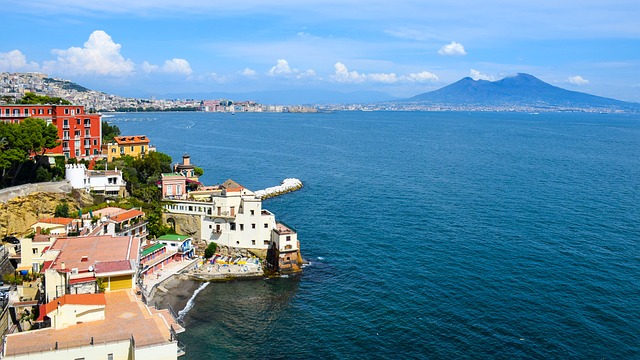
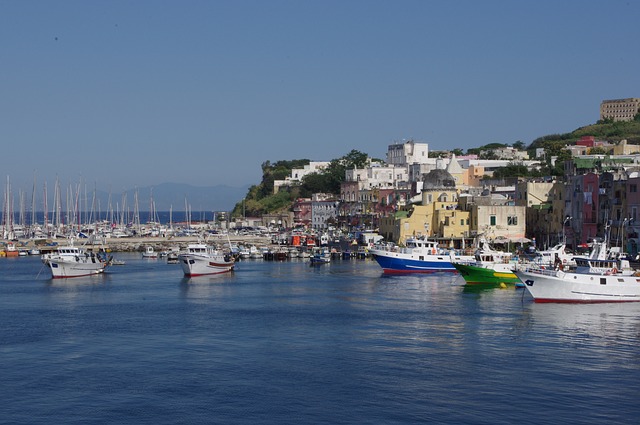
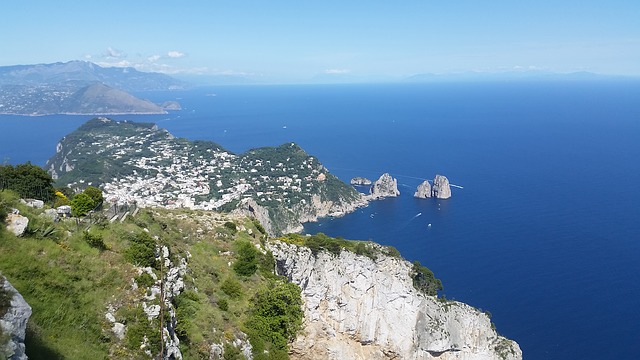


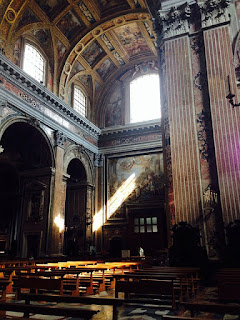
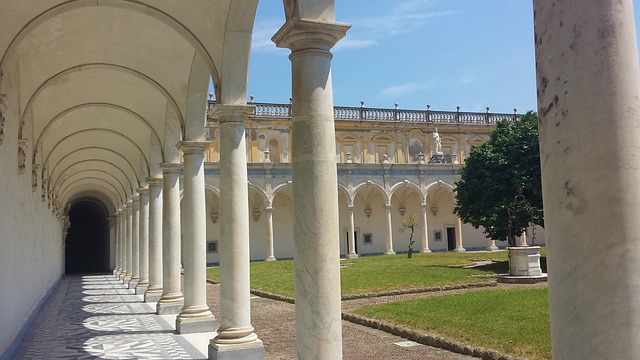


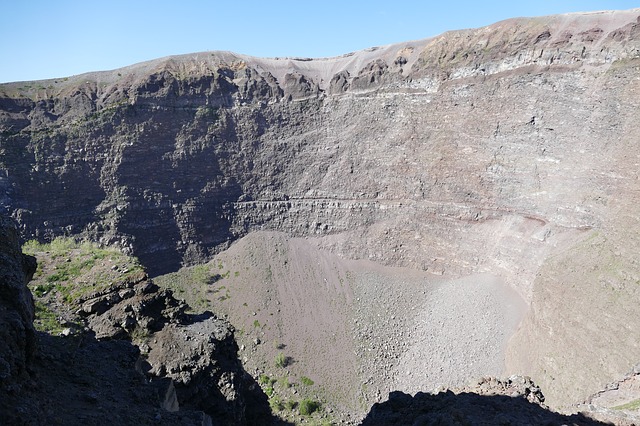
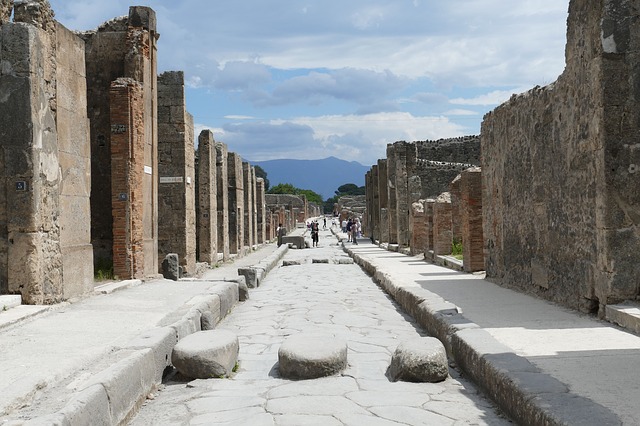













BMW ICOM A2 scanner
ReplyDeleteMercedes SD connect C4
Mercedes Benz scanner
BMW diagnostic tool
Porsche scanner
Mercedes diagnostic tool
Awesome blog. I enjoyed reading your articles. This is truly a great read for me. I have bookmarked it and I am looking forward to reading new articles. Keep up the good work! all inclusive caribbean vacations
ReplyDeleteniğde
ReplyDeleteyalova
çeşme
mardin
SP3N
kütahya
ReplyDeletenevşehir
erzincan
adana
bartın
N5H4Q
yurtdışı kargo
ReplyDeleteresimli magnet
instagram takipçi satın al
yurtdışı kargo
sms onay
dijital kartvizit
dijital kartvizit
https://nobetci-eczane.org/
7K7
izmir
ReplyDeleteErzurum
Diyarbakır
Tekirdağ
Ankara
141EU
Muğla
ReplyDeleteSamsun
Eskişehir
Sakarya
Kars
358C
bingöl
ReplyDeleteelazığ
hakkari
sakarya
erzincan
VXR6EF
elazığ
ReplyDeletegümüşhane
kilis
siirt
sakarya
54İA
82A5D
ReplyDeleteArdahan Parça Eşya Taşıma
Tokat Şehir İçi Nakliyat
Kırklareli Şehir İçi Nakliyat
Çerkezköy Boya Ustası
Çanakkale Şehir İçi Nakliyat
Mersin Şehir İçi Nakliyat
Afyon Şehirler Arası Nakliyat
Ağrı Lojistik
Tunceli Evden Eve Nakliyat
E8285
ReplyDeleteTokat Şehir İçi Nakliyat
Aydın Şehir İçi Nakliyat
Malatya Şehirler Arası Nakliyat
Batıkent Fayans Ustası
Ardahan Lojistik
Bingöl Parça Eşya Taşıma
Manisa Lojistik
Çerkezköy Oto Elektrik
Çanakkale Şehir İçi Nakliyat
03231
ReplyDeletedeca durabolin for sale
Hatay Evden Eve Nakliyat
Tekirdağ Evden Eve Nakliyat
masteron for sale
Bayburt Evden Eve Nakliyat
Silivri Fayans Ustası
deca durabolin
buy primobolan
Silivri Parke Ustası
BA3F0
ReplyDeletebinance %20 komisyon indirimi
8E35D
ReplyDelete%20 binance referans kodu
4DC2C
ReplyDeleteKripto Para Madenciliği Siteleri
Binance Kimin
Kripto Para Kazanma
Ön Satış Coin Nasıl Alınır
Referans Kimliği Nedir
Twitter Takipçi Hilesi
Onlyfans Takipçi Satın Al
Onlyfans Beğeni Hilesi
Bitcoin Çıkarma
gtyhtygnjhy
ReplyDeleteتسليك مجاري
شركة مكافحة حشرات بالاحساء rWEI7jJTJw
ReplyDelete2DCBF0AB8F
ReplyDeleteTelegram Airdrop Botları
Telegram Para Kazanma Botları
Telegram Farm Botları
Telegram Para Kazanma
Binance Hesap
8E9227A8B8
ReplyDeletetiktok ucuz takipçi
beğeni satın al
takipçi paketi
mobil ödeme takipçi
organik takipçi